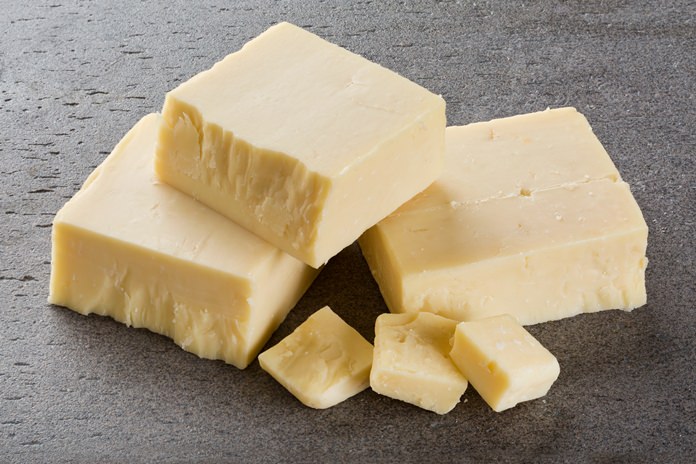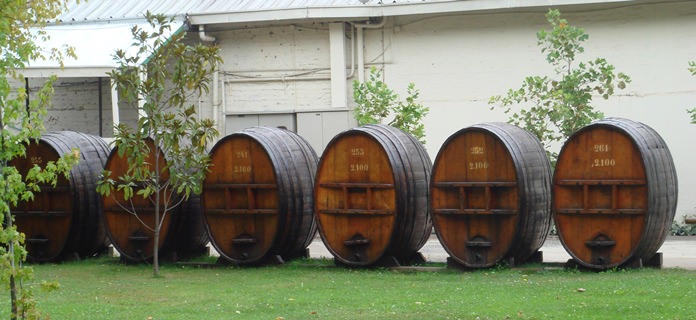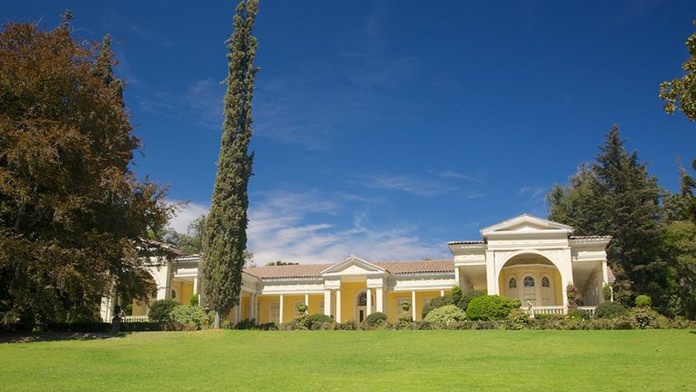
Cheese and wine have been partners for a long time. Cheese tends to make wine taste better because it coats the palate and not only hides any inherent bitterness in the wine but also softens the tannins. The fats and proteins in cheese can mask unbalanced or harsh flavours of poorly-made wine too. There’s a saying in the French wine trade which goes roughly, “Buy with bread, sell with cheese” because the cheese makes it easier to sell a bad wine. Professional wine buyers, whose job it is to spot any flaws in wine, prefer water, apple or even a carrot to cleanse the palate. Never cheese.
Contrary to popular belief, pairing cheese and wine is not as easy as it might seem. There’s also a common misconception that cheese should always be accompanied by red wine rather than white. I have no idea how this notion caught on, but it’s wrong. There used to be a bar in town at which the affable proprietor used to organise informal cheese and wine evenings from time to time. Having paid the appropriate fee, people would have swig of this and make a mental note of the ones they liked. The inspiration for each of these evenings was the arrival of an enormous hunk of Cheddar cheese which the bar owner managed to acquire and the wines were nearly always red. Now this was all very well except that to my mind, Cheddar cheese simply doesn’t work very well with most wine, especially reds. The problem is that the tannins in red wine clash with the cheese and the cheese biscuits. In any case, the bland “Cheddar” cheese that you find in these parts has probably come from Australia or New Zealand.
Many people seem not to realise that Cheddar is a place. To be more precise it is a large village on the southern edge of the Mendip Hills, about nine km north-west of the small cathedral city of Wells. In the winter it’s a dreary place and in the summer usually packed with tourists who have come to visit the Cheddar Gorge and caves. My parents had a house in a small village only a few miles from Cheddar and the British comedian Frankie Howard lived just down the road. It’s in the heart of Somerset, in England’s West Country which is dotted with farms, country pubs and cows. Cheddar cheese has been made there for almost a thousand years and it’s the most popular cheese in Britain. But the Cheddar locals rarely drink wine with it. The two just don’t seem to “go together”.
Concha y Toro Chardonnay Reservado (white) Chile. (Bt. 499 @ Tesco-Lotus)
As you might have guessed, or knew already, Concha y Toro literally translated means “shell and bull”. This pale yellow wine has a pleasing sweet aroma of fresh apples and pineapples but there are other more distant aromas in there too, possibly honey and melon. The wine is slightly sweet and not totally dry, as I was expecting. Of course, if I’d read the back label it would not have come as a surprise, but I avoid reading the back labels before tasting wine. They can be misleading. If we imagine sweetness on a scale from one to ten, with “1” being dry as a bone and “10” being syrupy, I’d put this wine at about number two or possibly three.

It has a pleasantly soft and refreshing mouth-feel, quite a bit of fresh fruit and a decently long finish. If you prefer your whites soft and round you’ll probably enjoy this attractive easy-drinker. Many white wines work perfectly with cheese. This one would go well with Brie, Camembert or Beaufort and you might enjoy it with blue cheese. It would work well with Emmenthal, Gruyère or any nutty cow’s milk cheeses. I mean cheeses with a nutty flavour, not cheeses from the milk of nutty cows.
Naga Red Wine Siam Red Blend, Thailand. Bt 399 @ Big C
Now here’s a budget wine that’s been around for some time and described as being “blended from several well-known grape varietals such as Shiraz” but what the well-known grapes actually are is probably anyone’s guess. I was interested to compare this wine with that old work-horse Mont Clair Bin 5 which is a blended Cabernet Sauvignon from the same company, Siam Winery. Incidentally, although the word “bin” originally meant a part of the cellar reserved for particular wines, it’s now only used as part of a trade name. Many Australian wineries like to brand their wines as “Bin 390” or some such thing, to give the impression that the wine is more prestigious than it actually is.

This light-bodied budget is pretty basic and has a rather sweet aroma of red currants, plums, touches of herb and a slightly peppery quality that presumably comes from the Shiraz. Compared to the Mont Clair, the wine has a softer, gentler mouth-feel but it’s not quite as dry. There’s plenty of fruit and a lively tang on the taste yet virtually no tannin on the palate, so the wine could well appeal to wine beginners who are reluctant to try reds. The lack of tannin would make it a good cheese partner too and it would probably go well with quite assertive cheeses.
Oh, and you may be wondering what wine would go with your Cheddar. If it’s a typically bland Australian Cheddar, try a dry acidic white wine like Sauvignon Blanc or even a dry Chardonnay. Dry sherry works well too. I have to admit that my personal choice for Cheddar, especially in a lunchtime sandwich, would be a cold, dry beer.
 |
 |





